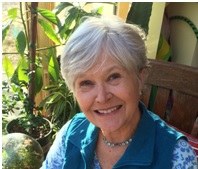Opinion: Now More Than Ever, Town Council Needs A Citizen Advisory Committee

Photo: Bluediamondgallery.com (creative commons)

Three years ago, the elected members of the former Town Meeting Advisory Committee (TMAC) made a proposal to the new council to create a new committee, comparable to the TMAC, to give the council the ability to gain valuable research about proposals and planning the council is considering. The proposed Council Advisory Committee would also study the impact of proposals on affected groups and neighborhoods, particularly groups that may not understand how to have their voices heard by the council. The committee would be appointed by the council and ideally would include a cross-section of points of view as well as people with research skills and a variety of expertise.
An excellent current example of how such a committee could be helpful would be to study various local solar bylaws to better understand best-practices and to benefit from the experience of other communities. This kind of research is not possible for staff to conduct, given their heavy workloads. And without it we have to ‘reinvent the wheel.’
Some have recommended creating an independent committee, not a council-appointed group, making a nimbler group and enabling research into topics and impacts the council may not have thought would benefit from more information.
I intend to resubmit this proposal to the new council in January with examples from the past three years when having such a capacity could have helped the council and shortened their deliberations. Below is an article that appeared in the Indy three years ago, which I feel is still quite relevant.
The following column by Meg Gage appeared in the Indy on June 10, 2019 under the title Town Council Needs Tools To Assess Unforeseen Consequences
One of the biggest challenges of any governing body is to step back and explore unintended consequences as well as points of view that enthusiastic advocates might not have considered or are reluctant to consider. Good government needs tools to balance the enthusiasm of advocates with the broader interests of the whole community.
Late in its existence, Town Meeting created the Town Meeting Advisory Committee (TMAC), as Michael Greenebaum describes in a recent article in The Indy.
TMAC was designed to provide a mechanism for Town Meeting to examine the impacts of proposed policy changes from a variety of perspectives and constituencies. The idea was modeled on the Finance Committee, an independent committee that made recommendations based on information about financial impacts. TMAC would have considered a range of impacts, including impacts on the environment, town culture, streetscapes, public safety, and specific constituencies. Its aim was to provide Town Meeting with background research and information that it could use to make informed decisions.
An example of a decision that might have been different if the issues had been more fully researched and a wider range of perspectives brought in was the Boltwood parking garage. Debate focused on how big to make the new facility, and the town settled on a decision to build a structure with a basement and ground floor, and to invest significant money to build it strong enough for a second floor to be added later. Subsequently, buildings were constructed in that area, aligned with the Master Plan to fill in downtown spaces, that may preclude adding a second floor. Now we face another parking challenge and the cheapest option, one the Town actually planned for, is probably foreclosed.
With the passage of the new charter and inauguration of the new council, the advisory committee went out of business. TMAC met over the summer of 2018 to make a proposal to the new council for a similar committee and to develop a Community Impact Report Framework (CIRF – for a description and example, look here), a tool for helping the council consider a variety of perspectives on the eventual impacts of a proposal. While the reception to the proposal was not exactly negative (as was reported in the Daily Hampshire Gazette), the majority of the councilors appear to believe that they already have the collective ability to fully research issues and fully consider the widest range of perspectives within the Amherst community; several councilors commented that the framework tool could be helpful. There was some discussion about referring the proposal to the Community Resources Committee (CRC), but it had not yet met so the proposal was referred to the Governance, Organization and Legislation Committee (GOL).
Particularly troubling to me in the council’s discussion on the proposal (on which I was a petitioner) and the CIRF was a charge by District 4 Councilor Evan Ross that the members of the TMAC did not have the right to make a proposal to the council. He referred to the Charter, Section 8.2(b), which says that a petition by a group must be signed by at least 150 legal residents. But he neglected to consider Section 8.2(a), which states that an individual or group can address the council with a petition, although it is up to the President to decide whether to bring it forward. Fortunately, At-large Councilor Mandi-Jo Hanneke, who is the chairperson of GOL, and Council President Lynn Griesemer (District 2) clarified that the TMAC proposal was in order and consistent with the charter.
Because of the nascent nature of everything related to the new form of government, the GOLF committee and I agreed that we petitioners would rewrite the proposal in a way that would fit in with the emerging council structure. In a subsequent email exchange with Hanneke, we agreed to submit an updated proposal at a future date.
One big question remains: does the council have the ability to consider a wide range of perspectives and impacts as it deliberates on town policy, particularly given the councilors’ already enormous workload? The council’s controversial decision to invest $211,000 in a temporary bridge for Station Road, for example, suggests not. Although the missing bridge on Station Road is an inconvenience for some Amherst residents, it is not essential for either emergency services or commercial interests. Several years ago, the town did not invest in a temporary bridge on Meadow Street in North Amherst, even though it was essential for farmers to get their farm equipment to their fields. Would a broader perspective have resulted in a different decision about the temporary bridge on Station Road, particularly at this time of numerous urgent demands on our capital budget?
Somewhat lost in these events was the actual tool that the TMAC crafted, the Community Impact Report Framework (CIRF), which was created after reviewing a significant number of ways to assess broad community impact. This would be helpful to council debates that would benefit from a broader perspective than persuasive, politically motivated advocates might bring to policy debates.
We need to be sure that a diversity of voices representing those most affected by council decisions are heard. Members of TMAC intend to bring the CIRF tool back to the GOL (or CRC) committee for consideration in July or August. In the meantime , Greenebaum is advocating for an independent, non-governmental group to research and assess the likely impacts of proposed policy on affected communities and interests. Stay tuned!
Meg Gage is the now-retired founding director of the Peace Development Fund and the Proteus Fund, national organizations based in Amherst that organize within philanthropy to advance campaigns related to peace, human rights, and democracy. She is a graduate of ARHS and taught at the high school. She served on the recent Charter Commission and is currently the chair of the Participatory Budgeting Commission and on the Planning Team of the District One Neighborhood Association (DONA).
